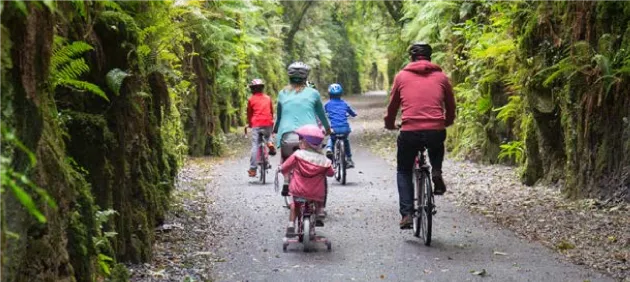4.1.4 Greenways
4.1.4 Greenways
The greenway concept has become more popular in recent years with the successful implementation of new projects. A good example is the Waterford Greenway, which is located along a disused railway and provides over 46km of trails for recreational use with links to accommodation and activities along the way.
In Dublin linear connections are possible where adequate open space provision exists along river corridors, canals and the coast. They serve as good alternative cycle and walking routes that are typically more pleasant than roadside locations. Constraints to creating full connections do exist, in some cases existing private property may block potential routes and in others habitats for flora & fauna are preferably conserved without disturbance.
On urban greenways there is also serious concern of conflict between commuter cyclists and other users. There is a need for a clear and consistent approach to signage and education of users in greenway etiquette. Existing and potential greenways are as follows:
• Tolka Valley
• Santry River
• Dodder River
• Turnapin-Mayne River
• Royal & Grand Canals
• Dublin Bay Greenway
Policy
Parks Services will support and promote the planning and implementation of Greenways within Dublin as shared spaces for pedestrians and cyclists within public parks.
Greenways are communication routes reserved exclusively for non-motorised journeys, developed in an integrated manner which enhances both the environment and quality of life of the surrounding area. These routes should meet satisfactory standards of width, gradient, and surface condition to ensure that they are both user-friendly and low -risk for users of all abilities. In this respect, canal towpaths and disused railway lines are a highly suitable resource for the development of greenways.”
Lille Declaration,12 September 2000 – European Greenways Association
